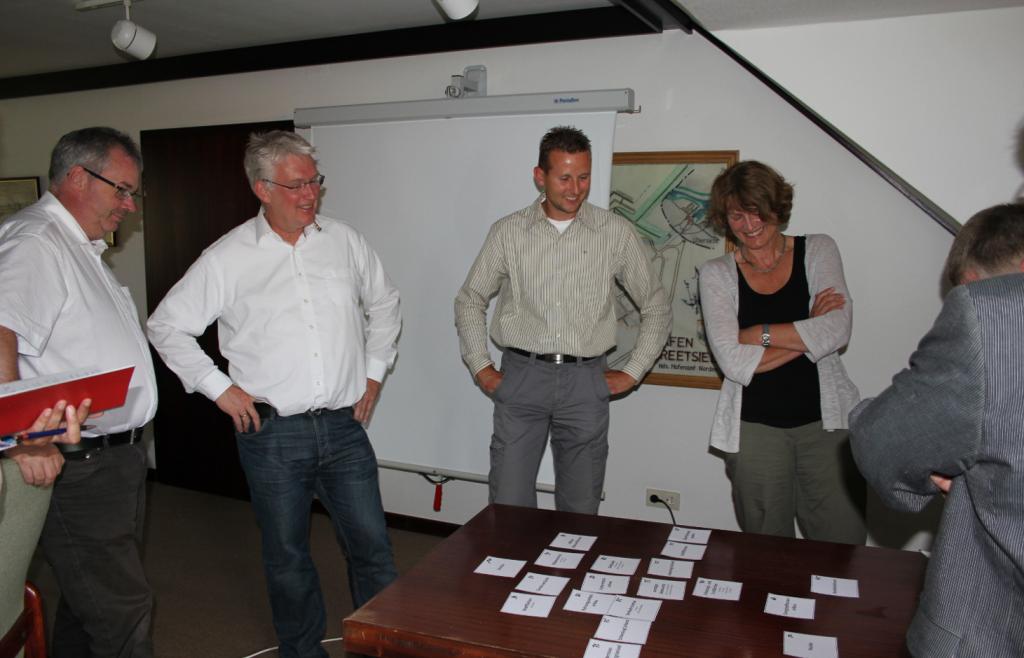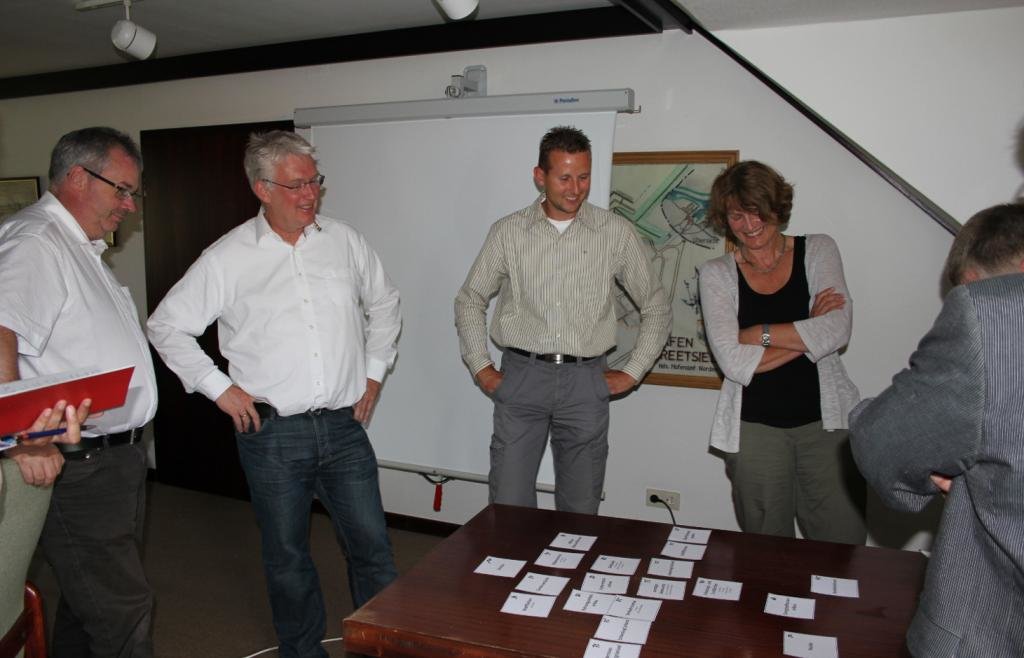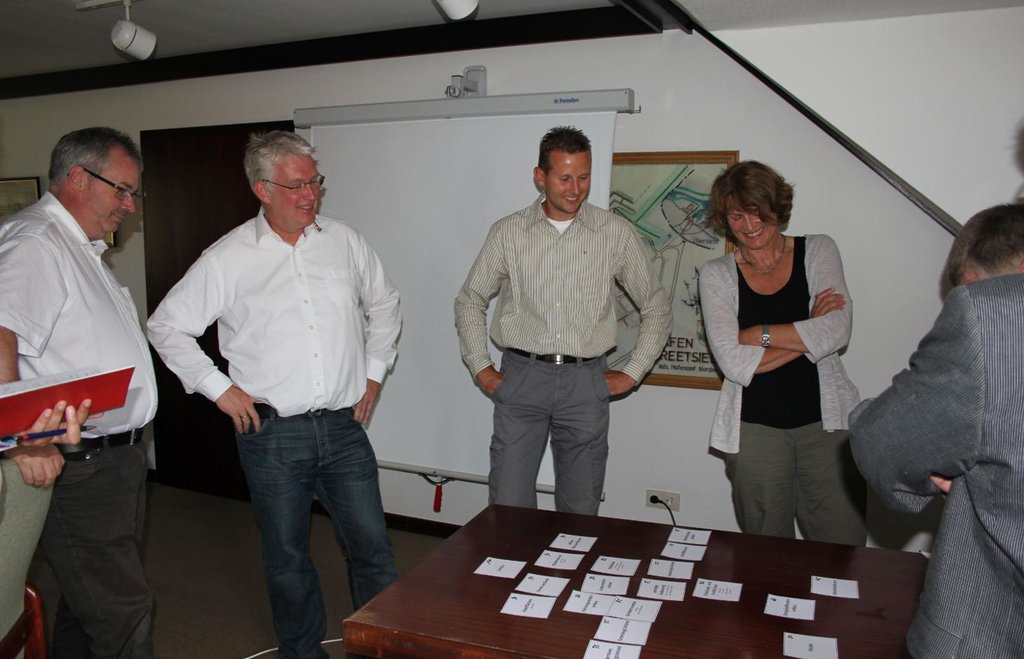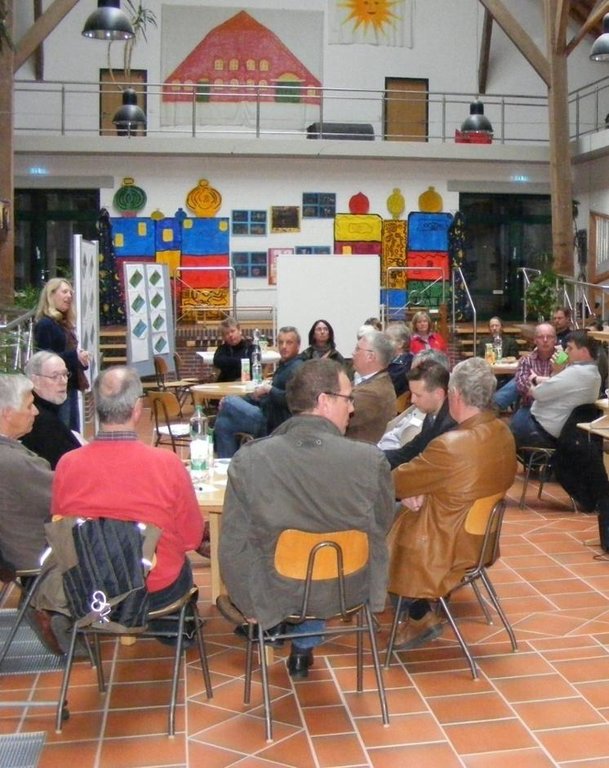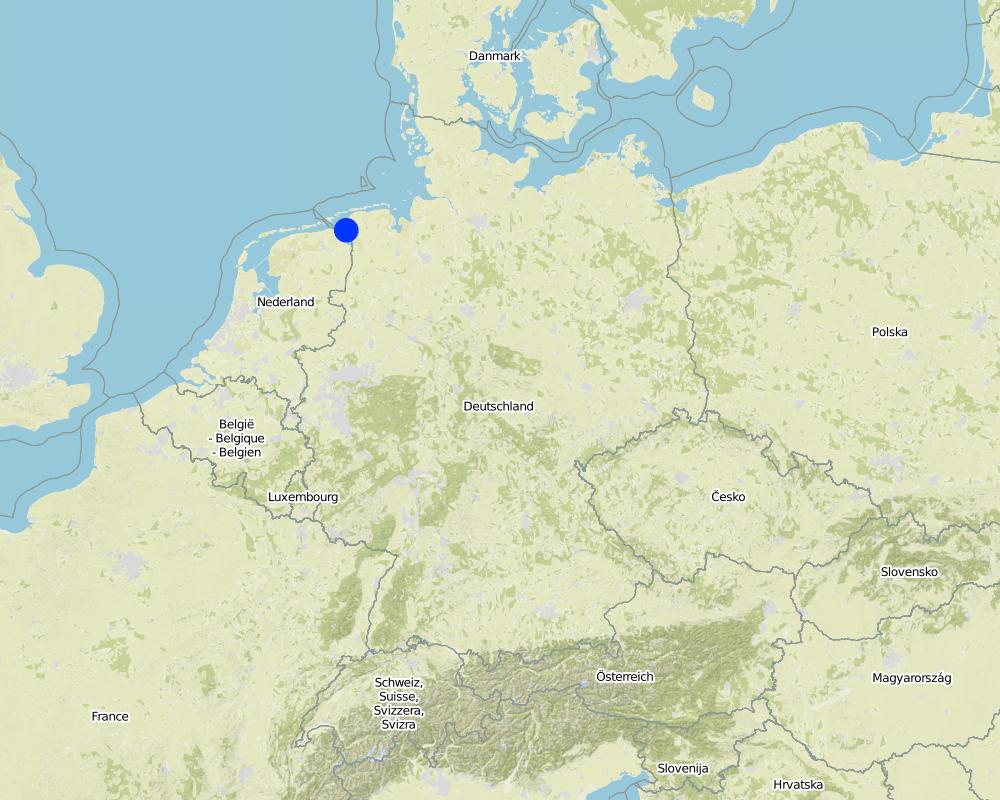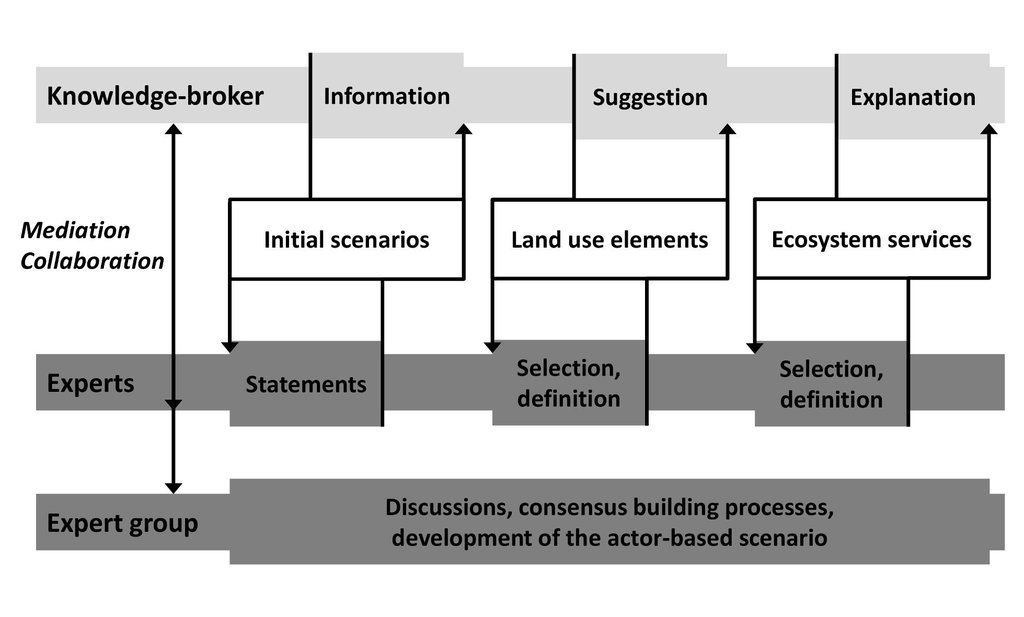Stakeholder participation in integrated assessment and planning of vulnerable coastal regions [ألمانيا]
- تاريخ الإنشاء:
- تحديث:
- جامع المعلومات: Martin Maier
- المحرر: –
- المُراجع: Fabian Ottiger
Stakeholder Partizipation und integrative Entscheidungshilfen für gefährdete Küstenregionen (deutsch)
approaches_2597 - ألمانيا
عرض الأقسام
توسيع الكل طي الكل1. معلومات عامة
1.2 تفاصيل الاتصال بالأشخاص الرئيسيين لمصدر المعلومات والمؤسسات المعنية بتقييم وتوثيق النهج
متخصص في الإدارة المستدامة للأراضي:
Karrasch Lena
leena.karrasch@uni-oldenburg.de
University of Oldenburg
D-26111, Oldenburg
ألمانيا
اسم المشروع الذي سهّل توثيق/تقييم النهج (إذا كان ذلك على صلة)
Sustainable Coastal Land Management (COMTESS / GLUES)اسم المؤسسة (المؤسسات) التي سهلت توثيق/تقييم النهج (إذا كان ذلك على صلة)
University of Oldenburg (University of Oldenburg) - ألمانيا1.3 الشروط المتعلقة باستخدام البيانات الموثقة من خلال WOCAT
متى تم تجميع البيانات (ميدانيا)؟:
10/03/2015
يوافق جامع المعلومات والشخص (لاشخاص) الرئيسي لمصدر المعلومات على الشروط المتعلقة باستخدام البيانات الموثقة من خلال WOCAT:
نعم
1.4 المراجع الخاصة باستبيان(استبيانات) تقنيات الإدارة المستدامة للأراضي
2. وصف نهج الإدارة المستدامة للأراضي
2.1 وصف موجز للنهج
Stakeholders have been involved in integrated assessment to develop action-oriented land use options addressing possible climate change adaptation measures as alternatives to traditional coastal protection strategies.
2.2 وصف تفصيلي للنهج
وصف تفصيلي للنهج:
Aims / objectives: The SLM approach described here comprises knowledge transfer between the scientific community and practitioners through a “stakeholder-scientist partnership”. The exchange of individual positions, interests and needs concerning spatial planning activities and sustainable land use management was very important. This was also true for the investigation of relationships and interactions between the different stakeholders. Furthermore, a stakeholder-based definition of land use elements and ecosystem services enabled the stakeholders to work with scientific concepts. Land use elements are delineated spatial areas related to one specific use of land, such as arable fields, infrastructure or aquatic areas. Ecosystem services, by definition the benefits people obtain from ecosystems, include provisioning, regulation, cultural and supporting services. The assessment of stakeholder preferences concerning each land use element and ecosystem service allowed an evaluation by scientists and researchers. All suggestions made by the stakeholders are included in the project results.
Methods: In total, there were 38 qualitative interviews carried out about the stakeholders opinion concerning sustainable and adaptive land use management (with one representative from each sector), 14 quantitative interviews to determine the relationship between land use elements and ecosystem services, several telephone and email conversations, 7 focus groups (interviews with more than one representative of each sector), and 4 regional forums (attended by representatives of all sectors). Each participatory process addressed a specific issue, such as determining preferences, relationships or scenario development. These plenaries provided a platform for stakeholder discussions, group assessments and consensus-building processes on the different issues. The focus groups were built to discuss sector-specific issues in greater depth and to support the joint decision-making process. All the results were triangulated and validated.
Role of stakeholders: A heterogeneous expert group including all relevant actors (incl. land users) in the case study region was convened. Fourteen local and regional stakeholders acted as representatives of the various sectors: water management, nature conservation, agriculture, regional and local governmental bodies, and tourism. They covered all relevant fields and levels (from administrative to policy) of decision-making in the community of Krummhörn. The role of the researcher during the participatory governance process is characterised as the “knowledge-broker”. The knowledge-broker acted at the interface between research and the stakeholders. The tasks were to provide the context (land use) and detailed information (ecosystem services) and determine decision-alternatives (land management scenarios) enabling and clarifying the freedom of choice. Additionally, the knowledge-broker translated research results to facilitate the dialogue between the different sectors and strengthen collaboration.
2.3 صور عن النهج
2.5 البلد/المنطقة/المواقع التي تم تطبيق النهج فيها
البلد:
ألمانيا
المنطقة/الولاية/المحافظة:
Germany, Lower Saxony
مزيد من التفاصيل حول الموقع:
County of Aurich, community of Krummhörn
Map
×2.6 تواريخ بدء وإنهاء تنفيذ النهج
أشر إلى سنة البدء:
2011
سنة الإنهاء (إذا لم يعد النهج مطبقًا):
2015
2.7 نوع النهج
- قائم على مشروع/برنامج
2.8 الغايات/الأهداف الرئيسية للنهج
The Approach focused mainly on other activities than SLM (Disaster risk reduction, stakeholder engagement)
The aim of the approach is to foster a more sustainable and adaptive future land use management process by including social, ecological and economic impacts of possible developments in the decision-making processes.
The SLM Approach addressed the following problems: Coastal zones with their natural and societal sub-systems are exposed to rapid changes and pressures on resources. Scarcity of space and impacts of climate change are dominant drivers of land use and adaptation management today. The population of vulnerable coastal regions has to deal with these complex problems, and to develop suitable options for land use and adaptation management considering socio-economic and environmental changes and their impacts on the land management, and vice-versa the impact of land management on the socio-economy and the environment. Future land use management needs to focus on the interactions of the entire human-nature system, aiming at more sustainable development while focusing on the benefits that ecosystems provide for people.
2.9 الظروف التي تمكن أو تعيق تنفيذ التقنية/التقنيات المطبقة بموجب النهج
المعايير والقيم الاجتماعية /الثقافية/ الدينية
- معيق
The stakeholders are concerned that the land their ancestors reclaimed from the sea might be taken back again. Furthermore, the stakeholders feared that current flood protection structures would be endangered by new developments such as water retention areas.
Treatment through the SLM Approach: Provide a platform for direct knowledge exchange between different stakeholders and scientists and joint development of land management options, ensuring active participation in transparent decision-making, and providing positive outcomes for all participants.
توفر/الوصول إلى الموارد والخدمات المالية
- معيق
The land used as a retention area is partially available for other land use. High costs for construction and development of retention area.
Treatment through the SLM Approach: Explanation of benefits provided by nature (ecosystem services). Calculation of expected
costs without changes in land management such as increased pumping costs.
الإطار المؤسساتي
- معيق
Disagreement between different sectors.
Treatment through the SLM Approach: Consensus finding through a participatory process.
الإطار القانوني (حيازة الأراضي، وحقوق استخدام الأراضي والمياه)
- تمكين/تمكيني
No effect of land ownership or water rights on the approach.
3. المشاركة وأدوار الأطراف المعنية
3.1 أصحاب المصلحة المعنيون بالنهج وأدوارهم
- مستخدمو الأراضي المحليون/المجتمعات المحلية
County of Aurich and community of Krummhörn
Agriculture, water management, tourism, nature conservation. There has been no discrimination inside the communities up to now.
- متخصصون في الإدارة المستدامة للأراضي / مستشارون زراعيون
Project members (scientists)
- الباحثون
- الحكومة المحلية
Waterboard and Dike authorities
Regional planning (county)
- الحكومة الوطنية (المخططون، صانعو القرار)
Major. Most decision makers are male
3.2 انخراط مستخدمي الأراضي المحليين/المجتمعات المحلية في المراحل المختلفة للنهج
| انخراط مستخدمي الأراضي المحليين/المجتمعات المحلية | حدد من شارك وصف الأنشطة | |
|---|---|---|
| المبادرة/التحفيز | تفاعلي | Stakeholder analysis (snowball-principle) to include all interest groups |
| التخطيط | تفاعلي | Local and regional decision-makers designed an actor-based scenario. They defined relevant land use elements and ecosystem services. The stakeholders ranked the land use elements and ecosystem services according to their preferences. Furthermore, they determined how important one land use element for a certain ecosystem service is. |
| التنفيذ | تفاعلي | The regional spatial planning authority implements the results from the approach. |
| الرصد/التقييم | غير موجود | Not yet |
| Research | سلبي | The stakeholders have been informed about the research results. |
3.3 مخطط التدفق (إذا كان متاحًا)
الوصف:
Description of the interactions between knowledge-broker (scientist), individual experts (local and regional decision-makers) and the expert group. The initial scenarios prepared by researchers informed the expert about different land use options. The experts gave statements judging the initial scenarios. Based on this feedback the researcher suggested land use elements and explained ecosystem services which have been selected and defined by the experts. These information were used by the expert group to discuss and develop the actor based scenario.
المؤلف:
Leena Karrasch (COAST – University of Oldenburg)
3.4 اتخاذ القرار بشأن اختيار تقنية/تقنيات الإدارة المستدامة للأراضي
حدد من الذي قرر اختيار التقنية/التقنيات التي سيتم تنفيذها:
- متخصصون في الإدارة المستدامة للأراضي بشكل أساسي، بعد التشاور مع مستخدمي الأراضي
اشرح:
Decisions were made by the stakeholder group. Guided consensus building processes on different land management topics.
Decisions on the method of implementing the SLM Technology were made by mainly by land users supported by SLM specialists. Decisions were made by the stakeholder group. Guided consensus building processes on different land management topics.
4. الدعم الفني وبناء القدرات وإدارة المعرفة
4.1 بناء القدرات/التدريب
هل تم تقديم التدريب لمستخدمي الأراضي / الأطراف المعنيين الآخرين؟:
نعم
حدد من تم تدريبه:
- مستخدمو الأراضي
- موظفون ميدانيون/ مستشارون
- decision maker
شكل التدريب:
- من مزارع إلى مزارع
- مناطق العرض
- اجتماعات عامة
- دورات
شكل التدريب:
- knowledge brokerage
المواضيع المغطاة:
Training focused on possible consequences of climate change.
4.2 خدمة استشارية
هل يملك مستخدمو الأراضي وصولا إلى خدمة استشارية؟:
نعم
وصف/تعليقات:
Advisory service is very adequate to ensure the continuation of land conservation activities; They are aware of possible adaptation measures, based on scientific information and group consensus building.
4.3 تعزيز المؤسسات (التطوير التنظيمي)
هل تم إنشاء أو تعزيز مؤسسات من خلال هذا النهج؟:
- لا
4.4 الرصد والتقييم
التعليقات:
There were no changes in the Approach as a result of monitoring and evaluation: Not relevant
There were no changes in the Technology as a result of monitoring and evaluation
4.5 البحوث
هل كانت البحوث جزءًا من النهج؟:
نعم
حدد المواضيع:
- علم الاجتماع
- الاقتصاد / التسويق
- علم الايكولوجيا
- تكنولوجيا
أعط تفاصيل إضافية وأشر إلى من قام بالبحوث:
A transdisciplinary research project worked on providing information and collecting data concerning sociology, economics, ecology and technology. This information was used for the work with the stakeholders, to illustrate possible future scenarios and available land management options with their consequences. The results are shown in technology T_GER003en. Furthermore these results were fed in to models based on climate change and sea level rise scenarios. These models show the effects of the proposed land management on the ecosystem services provided in the region.
Research was carried out both on station and on-farm
5. التمويل والدعم المادي الخارجي
5.1 الميزانية السنوية لمكون الإدارة المستدامة للأراضي في النهج المذكور
إذا لم تكن الميزانية السنوية الدقيقة معروفة، قم بالإشارة إلى نطاقها:
- 100,000-10,000
التعليقات (على سبيل المثال المصادر الرئيسية للتمويل/الجهات المانحة الرئيسية):
Approach costs were met by the following donors: government (Federal Ministry of Education and Research BMBF): 100.0%
5.2 الدعم المالي/المادي المقدم لمستخدمي الأراضي
هل حصل مستخدمو الأراضي على دعم مالي/ مادي لتنفيذ التقنية/ التقنيات؟:
كلا
5.3 إعانات لمدخلات محددة (بما في ذلك العمالة)
- غير موجود
التعليقات:
Labour was not rewarded
5.4 الائتمان
هل تم توفير ائتمان في إطار نهج أنشطة الإدارة المستدامة للأراضي؟:
كلا
6. تحليل الأثر والتصريحات الختامية
6.1 آثار النهج
هل ساعد النهج مستخدمي الأراضي على تنفيذ وصيانة تقنيات الإدارة المستدامة للأراضي؟:
- لا
- نعم، قليلا
- نعم، باعتدال
- نعم، إلى حد كبير
Awareness of challenges and understanding related to land use due to climate change was increased and support to design desired future land management was provided. Ideas for more sustainable land management have been spatially implemented in the regional plan.
هل ساهم النهج في تمكين الفئات المحرومة اجتماعيا واقتصاديا؟:
- لا
- نعم، قليلا
- نعم، باعتدال
- نعم، إلى حد كبير
It may improve the situation of socially and economically disadvantaged groups in future.
Did other land users / projects adopt the Approach?
- لا
- نعم، قليلا
- نعم، باعتدال
- نعم، إلى حد كبير
Regional plan ('Regionales Raumordnungsprogramm') for the county of Aurich adopted the approach to tackle the impact of climate change.
Did the Approach lead to improved livelihoods / human well-being?
- لا
- نعم، قليلا
- نعم، باعتدال
- نعم، إلى حد كبير
It may improve livelihoods in future.
Did the Approach help to alleviate poverty?
- لا
- نعم، قليلا
- نعم، باعتدال
- نعم، إلى حد كبير
Poverty is not the issue addressed by this approach.
6.2 المحفز الرئيسي لقيام مستخدمي الأراضي بتنفيذ الإدارة المستدامة للأراضي
- زيادة الإنتاج
- زيادة الربح (القدرة)، وتحسين نسبة التكلفة إلى العائد
indirect via adapted land use
- الوعي البيئي
only environmental consciousness
- تحسينات جماليية
- well-being and livelihoods improvement
including prevention of damage during extreme events.
- decision support
decision support for decision makers
6.3 استدامة أنشطة النهج
هل يمكن لمستخدمي الأراضي المحافظة على استدامة ما تم تنفيذه من خلال النهج (بدون دعم خارجي)؟:
- نعم
إذا كانت الإجابة بنعم، صف كيف:
It is very likely, that the involved stakeholder meet in future for continuation of the participatory process.
6.4 نقاط قوة/مزايا النهج
| نقاط القوة/ المزايا/ الفرص من وجهة نظر مستخدمي الأراضي |
|---|
| The work on a common goal improves decision-making processes. |
| Research and scientists provide evidence and scenarios. They translated research results to facilitate the dialogue between the different sectors and strengthen the collaboration. |
| Active participation in transparent decision-making lead to positive outcomes for all participants. Participation is a positive and practical way to overcome controversial issues. |
| نقاط القوة/ المزايا/ الفرص من وجهة نظر جامع المعلومات أو غيره من الاشخاص الرئيسيين لمصدر المعلومات |
|---|
| Together with stakeholders of the region, concrete and action oriented adaptive strategies will be developed. |
|
Stakeholder collaboration promotes social learning processes, consideration of different world-views and cooperation and agreements. |
| Stakeholder engagement as important tool for implementing sustainable development and link cross-sectoral interests. |
|
Stakeholders help to identify risks, impacts and values. |
| Stakeholders provide input to planning processes, they are meaningful partners and provide local knowledge. |
6.5 نقاط الضعف/ العيوب في المنهج وطرق التغلب عليها
| نقاط الضعف/ المساوىء/ المخاطر من وجهة نظر مستخدم الأراضي | كيف يمكن التغلب عليها؟ |
|---|---|
| Different world-views of different participants. | Sufficient time for interaction and exchange. Be open minded. |
| Time consuming meetings. | Motivation, give feedback, ongoing information process (learning and knowledge exchange). |
|
Scientific concepts are not easy understandable. |
Use of simple language and avoidance of scientific jargon. |
| نقاط الضعف/ المساوىء/ المخاطر من وجهة نظر جامع المعلومات أو غيره من الاشخاص الرئيسيين لمصدر المعلومات | كيف يمكن التغلب عليها؟ |
|---|---|
|
The work with stakeholders is time intensive and challenging. |
Highling the benefits and the time and commitment gained compared to approaches which do not include the stakeholders and what the consequences are. |
| It is difficult to include all different interests. | Make the project interesting for everyone. Elaborate different options depending on the different interest and discuss the output (benefits and trade-offs). |
| Keep all stakeholders together. | Give feedback, ongoing information process. |
| “Subjective” character of research. | Trying to be as objective as possible. |
7. المراجع والروابط
7.1 طرق جمع/مصادر المعلومات
- زيارات ميدانية، مسوحات ميدانية
- مقابلات مع مستخدمي الأراضي
7.2 المراجع للمنشورات المتاحة
العنوان، المؤلف، السنة، النظام القياسي الدولي لترقيم الكتب ISBN:
Linking the ecosystem services approach to social preferences and needs in integrated coastal land use management – A planning approach, Leena Karrasch, Thomas Klenke, Johan Woltjer, 2014
متاح من أين؟كم التكلفة؟:
Land Use Policy 38, 522-532; http://www.sciencedirect.com/science/article/pii/S0264837713002718
الروابط والوحدات المواضيعية
توسيع الكل طي الكلالروابط
لا يوجد روابط
الوحدات المواضيعية
لا يوجد وحدات مواضيعية


